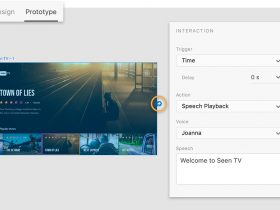
Databases are a standard element of business, providing a convenient and efficient way to both store and retrieve important information. Here we look at one facet of this field – namely Amazon’s [AWS] Relational Database Service [RDS]. We begin by sharing a basic explanation of what it is and how it works, before moving on to proving some tips on how to ensure RDS best practice.
So what exactly is the AWS Relational Database Service?
Amazon’s RDS is a web-based service which is designed to make running a cloud-based relational database as straightforward as possible. This applies to all stages, from the initial set up through to daily operation; with the option to scale up and down as necessary. Overall this approach is a good value option, and one which can take care of regular database admin tasks. You can see more aws rds best practices by checking out the following website.
The ‘relational’ aspect of this service describes the way the information is organized, and the way it can be used – which are a step beyond a standard database. The data they contain is connected by various relationships, and overall this means that different parts of the data can be retrieved without needing to do anything to the actual database. Data items are organized by rows (which are usually marked with a key, either primary or foreign), and columns (which store the data value.)
The ways RBDs sort data
Every table has at least one column, and the data that (or those) contain can be classified in several ways:
· 1-1: A simple case of one of the table records relating to another
· 1- many: A single table has relationships to records in more than one other table
· Many – one: Several table records can be related to one other.
· Many – many: several table records relating to several records in another table
Why this is helpful?
In brief, this system makes it easy to add new data, retrieve data based on specific relationship criteria which would be difficult with a traditional database and so on.
How Do You Ensure Best Practice of Amazon’s RDS?
Security and privacy
This is perhaps the key area to focus on, when considering best practice in relation to this type of database. It is crucial that access to certain areas of information is controlled, perhaps according to employee status – so, for example, management could access sensitive data on salaries while junior employees couldn’t.
A clear way to monitor the database
This must be reliable and in place before any data is added, so any unauthorized access (or attempt to access) will be notified to key personnel. This service can also allow administrators to monitor the general day to day workings of the database – so any changes at all are noted and can be followed up as necessary.
Control access in the recommended way
This means using AWS IAM accounts to do such things as set up group parameters. Each individual who is involved in managing RDS resources must have their own IAM account, with the relevant permissions set up, and IAM credentials need to be rotated on a regular basis.






Leave a Reply